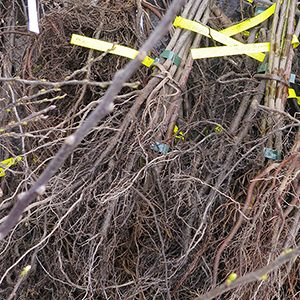Climate change rises awareness on the fragility of ‘ cloned ‘ species. The planting of trees from diverse and/or drought-resistant genetics is now topical.
Different contexts involve different choices.
Planting the right tree in the right place!
The choice is about biodiversity and planting the right tree in the right place!
STUDIES & RECOMMENDATIONS
We assist you in your planting choice with:
– a landscape analysis.
– a plant structure inventory in place.
– taking into account the mixity of the urban and peri-urban existing trees.
The study of soils and micro climates also condition the choice of planting. Urban, peri-urban or natural environments require different considerations. An overview of the green corridor and a consideration of the maintenance and tree management are an integral part of the study.
Native plants versus exotic plants?
Some historical perspective… prior to the last Ice Age on the surface of the globe (approximately 10,000 years ago), most of the Northern Hemisphere (including Europe) enjoyed a tropical or subtropical climate.
Fossil studies showed that the forests of that time were illustrated by a very rich diversity in which, as Philippe Riou-Nivert, a forest engineer specializing in the issue of resinous woods and climate change, explains in his numerous publications. He mentions: “co-existed pines, spruces, oaks, beech trees, maples… etc with palms, magnolias, laurels, tulip trees, cypresses, douglas, cedars…”. After the last glacial period, these species then dispersed into areas that were more favourable to their genetic and adaptive heritage.
Therefore, the question of the indigenous status of certain species with regards to the legitimacy of so-called ‘exotic’ species, artificially reintegrated later, remains delicate and controversial.
Nevertheless, the requirements of the professional sector in terms of traceability can be explained by the imbalance of the ecosystem when reintroducing some species.
Some pioneer species known as ‘invasive’ (by their tendency to colonize space), quickly settle at the expense of others and, without control, alter an already disturbed ecosystem.
In addition, exotic species imported from other regions are likely to travel with their cohort of microorganisms that lack their usual predators or may spread new diseases.
A special care must, therefore, be taken when buying and choosing a plant!
Plant native trees of local provenance?
This French label guarantees traceability of seeds from natural environment and aims to maintain genetic diversity.
The label promotes territories’ biodiversity. Some biogeographical regions have been defined and the plants issued from ‘ wild ‘ seeds which are integrated in rural areas, are more resilient.
Indeed, species of genetically dissimilar seeds offer more resistance to pathogens, climatic changes etc.
This is an interesting resource therefore also in urban areas for plantations of young trees!
Plant drought-resistant trees versus native trees?
Why plant drought-resistant trees and shrubs today?
The adaptation of species to the future climate is difficult to predict. Numerous studies on tree phenology are at work with INRA on forest and urban environments.
The current climatic problems caused by a warming induced by the human activity of this last half century make it difficult to know which species will best be able to withstand the current climatic disturbances.
Factors such as genetic mutation or tree migration are all difficult to predict over such a short period of time.
Against a backdrop of climate change, drought-resistant trees from drier climates are increasingly adapted to urban circumstances. Most trees from dry climates are already acclimatised to the northern cities that adopt them. That’s because the climate in the city is not unlike that in the Mediterranean due to the density of its constructions, the heat stored in its buildings and radiating from its asphalt.
Planting pits’ size and soils artificialisation disturb the water regime of urban trees. However, trees from dry or arid backgrounds can endure strong heat and also require minimal watering.
We care about the characteristics of trees and shrubs of dry climates and their adaptation to the cities of tomorrow. We frequently visit and study trees on the French Riviera.
Our studies, based on the work of INRA, focus on the analysis of their biological characteristics, ornamental features, cultural and planting requirements. We also keep updated on varieties resistant to known diseases and new pathogens.
Acclimatisation and non-invasive species: the right choice!
The introduction of new species must be well planned: some invasive aspect and impact of new bacteria remain a major issue!
As landscape designers and tree specialists, we can assist you in the right choices for a quality and sustainable plantation!

